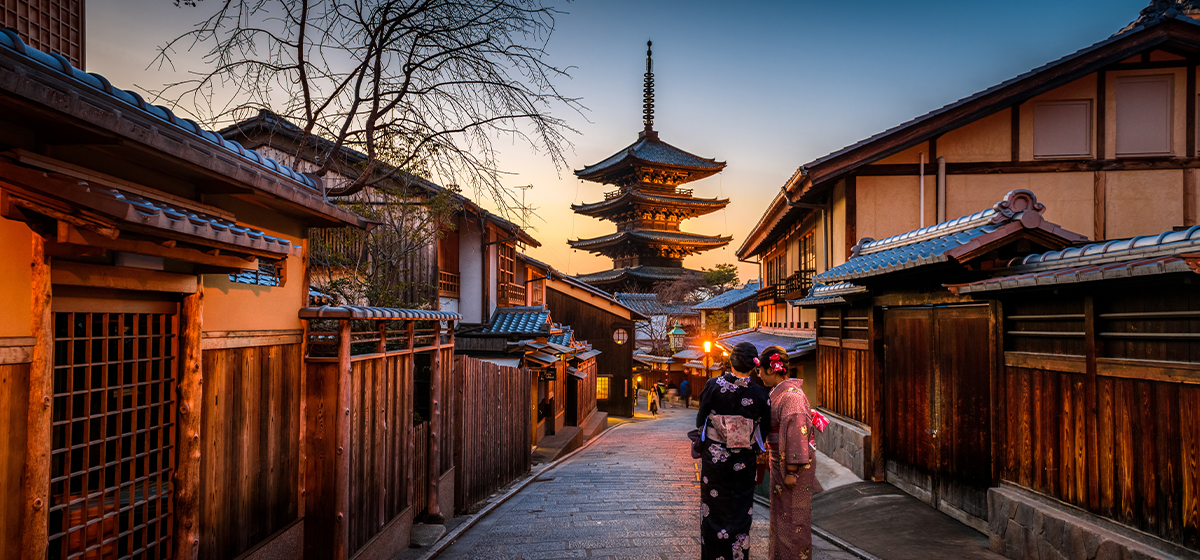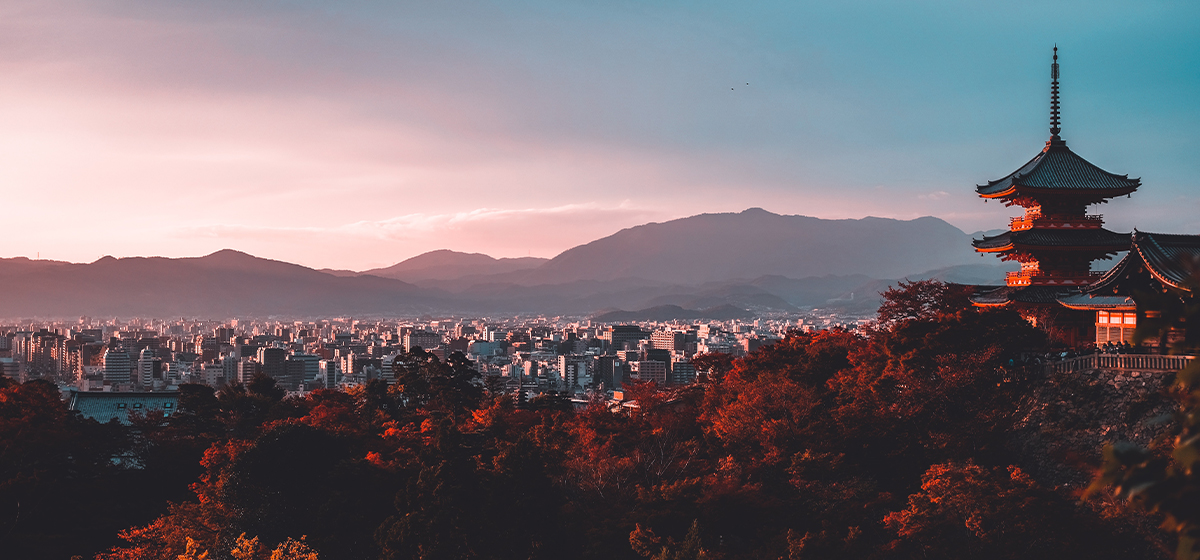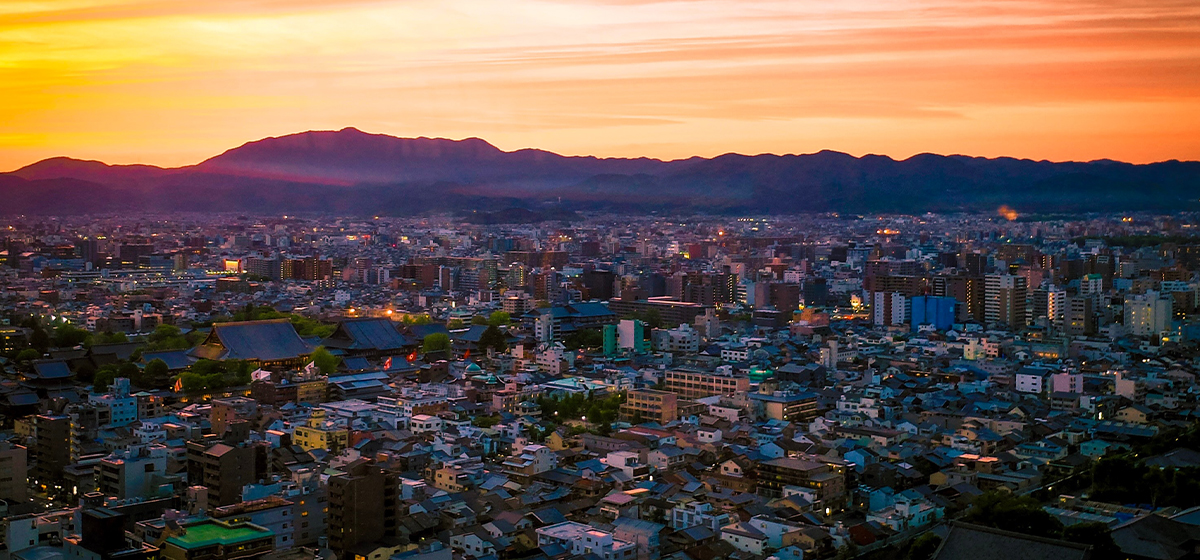Kyoto: Cultural Heart of Japan & Perfect for Traditional Japanese Events
Japanese culture is a mix of the old and the new. The contrast between modern culture & towering skyscrapers versus traditional culture & ancient temples is something that everyone loves about Japan; the best of both worlds. In previous JTB Meetings & Events by JTB Communication Design articles we’ve introduced Tokyo and Osaka, Japan’s urban modern hubs. Now let’s take a look at the other side: Kyoto. Kyoto is not as big as Tokyo or Osaka but still sits in the top 10 most populated cities of Japan. Moreover, it carries more history than virtually any other region, having been the capital for over 1000 years. This alone is reason enough to visit, since it includes many historical unique venues that you can consider for your events, corporate or otherwise. In some ways there is no more ‘Japanese’ place than Kyoto, and we consider it the cultural heart of Japan. Sightseeing can be included before or after your event, and there is also a wide range of hands-on cultural experiences to be had such as tea ceremony, traditional lodging houses, as well as visits to shrines and temples under the guidance of both Japanese and foreign priests.


- In the center of Kyoto you will find Kyoto Station and Downtown Kyoto. As it is a big city, this is where most of the modern shopping malls, major restaurants, hotels and entertainment districts are found.
- A bit further to the north are sights such as Nijo Castle and Kyoto Imperial Palace, historical sights worth visiting. Certain unique venues such as Nijo Castle and many temples can also be hired to host gala dinners!
- Even further north is the renowned Kyoto International Conference Center where international summits frequently take place.
- To find a high concentration of the main highlights of Kyoto you want to go east to the Higashiyama area. Your first stop might be the famous Gion district, which connects to many historical atmospheric streets.
- From there you can go north to see many sites such as Nanzen-ji Temple as well as many museums. Or you can veer south which leads you to the unforgettable Kiyomizu-dera Temple.
- Go even further to the southeast and you will arrive and the endlessly photogenic Fushimi-Inari-Taisha Shrine where you can walk through literally thousands bright red torii gates.
- Jumping back to the opposite northwest side of Kyoto, this is where you find the gorgeous Kinkaku-ji, also known as the Golden Pavillion.
- Lastly, even further west, slightly removed from the bustling city, is Arashiyama with its towering Bamboo Grove and many more, slightly quieter, temples to discover.
 Lastly, it is always good to remember that Kyoto is only a stone’s throw away from Osaka and by extension Kobe as well. Any event you organize in this Kansai area has the potential to bring in interest from a huge urban hub, second only to Tokyo. On top of that, we are getting closer to the World Expo 2025 in Osaka. This will bring major business and event activity not only to Osaka but the surrounding areas as well.
Lastly, it is always good to remember that Kyoto is only a stone’s throw away from Osaka and by extension Kobe as well. Any event you organize in this Kansai area has the potential to bring in interest from a huge urban hub, second only to Tokyo. On top of that, we are getting closer to the World Expo 2025 in Osaka. This will bring major business and event activity not only to Osaka but the surrounding areas as well.

Whether you are looking to organize a conference or corporate business event in Kyoto, or include it as a stop on an incentive tour before/after a separate event, reach out to us and let’s discuss your options!

History of Kyoto
As mentioned above, Kyoto has a long and deep history within Japan. While there was human activity long before, Kyoto (then known as Heian-kyo) was founded in the 8th century and became the imperial capital in 794. It remained the imperial seat until 1869 when Tokyo took its place. The city survives many different phases in Japanese history as well as a good amount of destructive wars. It was during the peaceful Edo Period (1603-1868) that it could truly flourish, just as Edo (Tokyo) and Osaka did. As far as modern history goes, one notable fact is that during World War II Kyoto was largely spared from fire bombing, as well as taken off the atomic bomb target list. The value of Kyoto as an ancient cultural hub outweighed the strategic value it may have in the war and so it was spared. Thanks to this decision many pre-war buildings are still standing firm in Kyoto.
Areas of Kyoto: Culture & History
Again, comparing it to Tokyo or Osaka nowadays, Kyoto city is on the smaller side. This is actually great news for visitors, since you can get around between various sightseeing hotspots with ease. Both intricate railway systems and bus networks can get you anywhere, and it is a very tourist-friendly city. Whether you want your event attendees to be able get to the venue fast, or if you want to include an efficient incentive tour around the city, Kyoto’s compactness is a plus. So what are some of the main areas and sights? Follow along with the interactive Map down below.- In the center of Kyoto you will find Kyoto Station and Downtown Kyoto. As it is a big city, this is where most of the modern shopping malls, major restaurants, hotels and entertainment districts are found.
- A bit further to the north are sights such as Nijo Castle and Kyoto Imperial Palace, historical sights worth visiting. Certain unique venues such as Nijo Castle and many temples can also be hired to host gala dinners!
- Even further north is the renowned Kyoto International Conference Center where international summits frequently take place.
- To find a high concentration of the main highlights of Kyoto you want to go east to the Higashiyama area. Your first stop might be the famous Gion district, which connects to many historical atmospheric streets.
- From there you can go north to see many sites such as Nanzen-ji Temple as well as many museums. Or you can veer south which leads you to the unforgettable Kiyomizu-dera Temple.
- Go even further to the southeast and you will arrive and the endlessly photogenic Fushimi-Inari-Taisha Shrine where you can walk through literally thousands bright red torii gates.
- Jumping back to the opposite northwest side of Kyoto, this is where you find the gorgeous Kinkaku-ji, also known as the Golden Pavillion.
- Lastly, even further west, slightly removed from the bustling city, is Arashiyama with its towering Bamboo Grove and many more, slightly quieter, temples to discover.
Why Bring Your Business Events to Kyoto?
Above was just a sample of the main highlights but as you can imagine there are countless more historical and unique venues that could play a part in your future meetings and events. But, while all these tourist sights are great for a visit, you might be wondering about the direct business side of the city as well. As mentioned Kyoto is one of the biggest cities in Japan with a bustling downtown as well. The key industries are electronics and IT. Major corporations such as Nintendo have their headquarters in Kyoto and it can be a good hub for connecting within these sectors. Additionally, Kyoto is home to many universities and other academic institutions. Some of these (Kyoto University, Doshisha University, Ritsumeikan University, etc.) are among the highest rated not just in Japan but in the entire world. Lastly, it is always good to remember that Kyoto is only a stone’s throw away from Osaka and by extension Kobe as well. Any event you organize in this Kansai area has the potential to bring in interest from a huge urban hub, second only to Tokyo. On top of that, we are getting closer to the World Expo 2025 in Osaka. This will bring major business and event activity not only to Osaka but the surrounding areas as well.
Lastly, it is always good to remember that Kyoto is only a stone’s throw away from Osaka and by extension Kobe as well. Any event you organize in this Kansai area has the potential to bring in interest from a huge urban hub, second only to Tokyo. On top of that, we are getting closer to the World Expo 2025 in Osaka. This will bring major business and event activity not only to Osaka but the surrounding areas as well.

Whether you are looking to organize a conference or corporate business event in Kyoto, or include it as a stop on an incentive tour before/after a separate event, reach out to us and let’s discuss your options!
